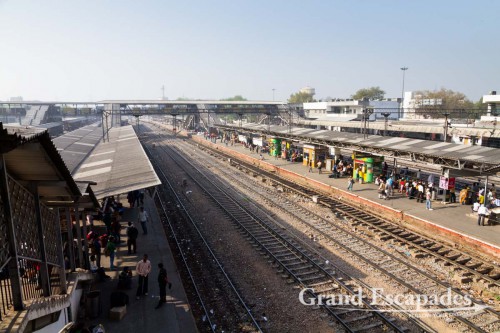We are not fond of big cities, so we planned very little time for Delhi. Something we regretted as soon as we realized how much there is to see and how easy it is to get around. Even the pollution did not bother us as much as on the day of our arrival.
The very efficient, highly modern subway gives you the freedom to travel independently and quickly in this huge city of 12 to 15 million people without having to haggle with obnoxious cab drivers. Most unusual were the metal detectors and security checks when entering each station. We hardly ever travelled during rush hour and could not imagine when throngs of passengers press forward through the booth, strictly separated men and women.
The subway is extremely clean. Big signs remind passengers that drinking, eating and spitting is forbidden. The first 2 cars are for women only. Men entering these less crowded cars get fined, 250 Rupees. What could to be improved is the discipline of passengers when entering the train: even if it is half empty, they would keep pushing forward before people could leave the car and race for the empty seats.
Striking was how quickly the city takes on a different face: two or three stops on the metro could take you into a completely different universe, from green parks, cleans streets to the most congested mayhem with all vehicles honking and skinny men pushing heavy loads on bikes along potholed streets.
The most exciting form of mobility can be that of a pedestrian. To get to the metro from our hotel, we had to cross a six-lane highway. With no traffic light or an underpass anywhere near, it meant running for your life. Gilles was more courageous than Heidi and often he would have to wait forever on the other side of the road until Heidi found an experienced Indian to tag onto. This is not Vietnam where you walk straight in an avalanche of scooters that skillfully meander around you. In Delhi, real big cars are the opponents, whose drivers do not waste second on these desperate walkers running like rabbits.


No comments yet.